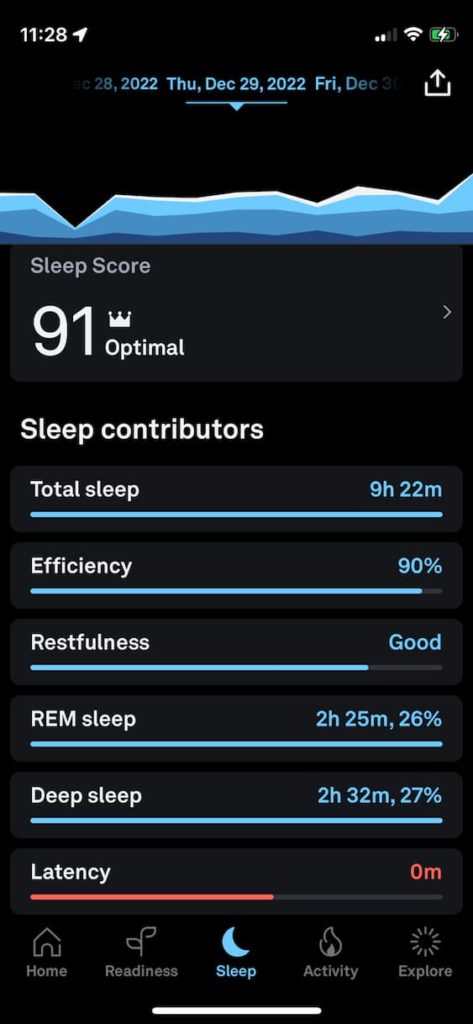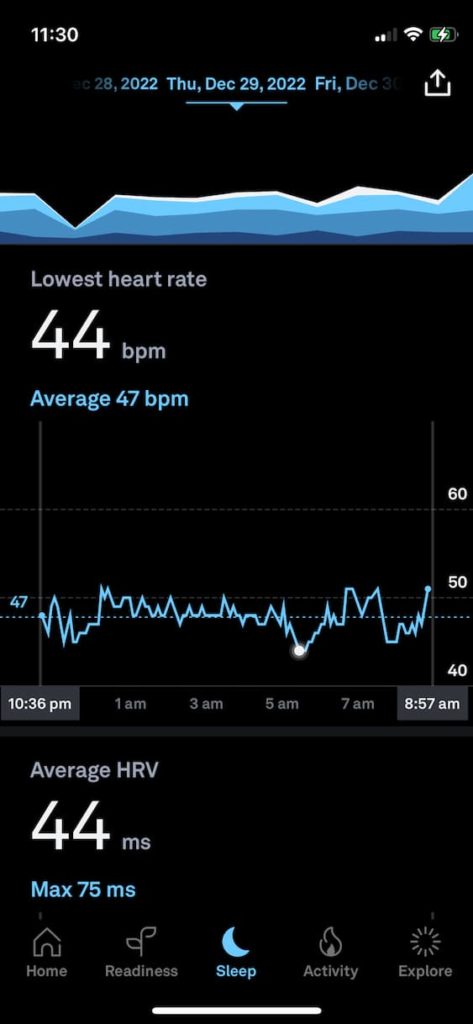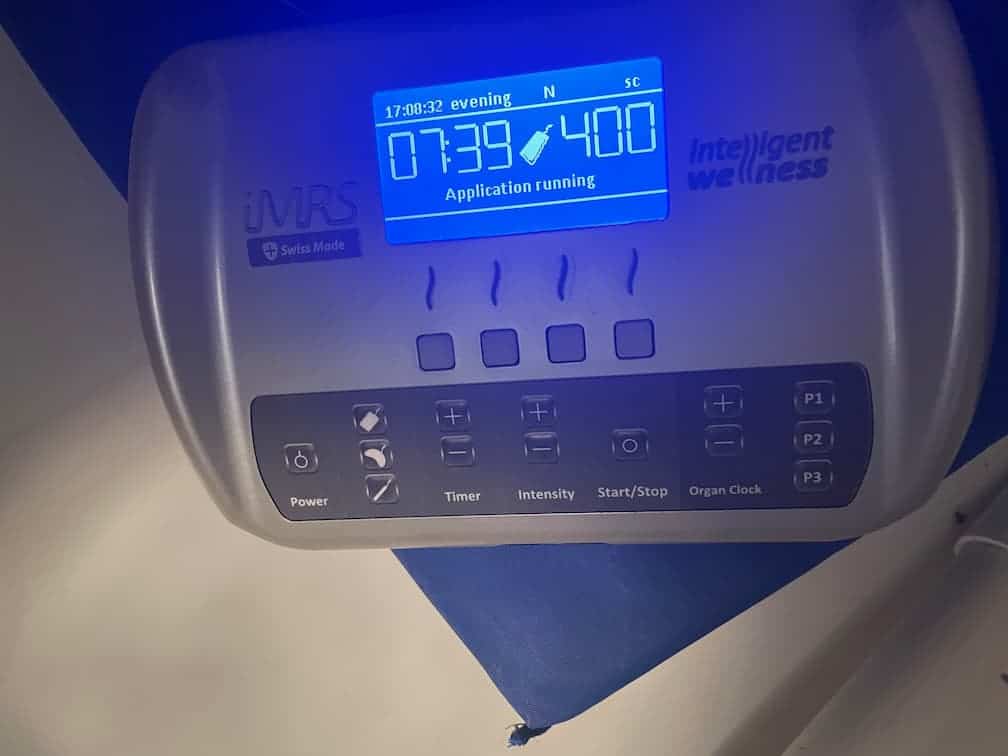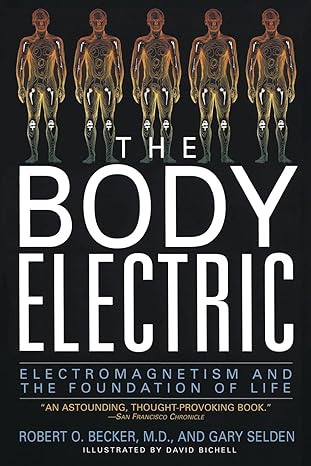PEMF Therapy: A Comprehensive Guide to Pulsed Electro-Magnetic Field Therapy
I get a lot of biohacking and wellness-related ideas initially from the Ben Greenfield Life podcast. I came across several episodes on Pulsed Electro-Magnetic Field (PEMF) therapy including one with Dr. William Pawluk, MD, MSc, an established expert, and PEMF proponent. I even tried a PEMF treatment when I visited the wellness center Optimyze in Phoenix, AZ. However, what prompted me to dig back into this subject and consider making it part of my weekly routine was hearing about the Superhuman Protocol that uses PEMF, red light therapy, and exercise with oxygen therapy (EWOT) as its three pillar treatments to drive oxygenation. This post has what I found when I dove into the science, benefits, and applications of PEMF therapy, so you too can make an informed decision about whether to incorporate it into your routine as well.
Understanding PEMF: The Science Behind It
To truly appreciate the potential benefits of PEMF therapy, we must first explore the role of electromagnetic fields in the human body. If you want an interesting book that investigates how the body uses electric currents you can check out The Body Electric: Electromagnetism And The Foundation Of Life by Robert Becker.
The Body’s Natural Magnetic Field
Did you know that our bodies produce their own magnetic fields? That’s right, folks. We’re like walking magnets. Our cells communicate through electromagnetic signals, allowing them to perform essential functions such as cell division and nutrient exchange.
The Principles of PEMF Therapy
PEMF therapy is based on the idea that delivering controlled electromagnetic pulses to specific areas of the body can enhance cellular function. By introducing these pulses, PEMF influences cellular functions like energy production and waste removal, which can lead to various health benefits.
Comparing PEMF to other electromagnetic therapies, PEMF differentiates itself because it uses pulsating fields instead of continuous ones, which is believed to have a more significant therapeutic effect on cells.
The Benefits of PEMF Therapy
So, what’s in it for you? Let’s explore some of the possible benefits of PEMF therapy.
Pain Management and Relief
PEMF therapy has been studied for its potential to alleviate chronic pain conditions such as fibromyalgia and osteoarthritis. It has been found to reduce inflammation and swelling, which can contribute to pain relief.
Improved Circulation and Oxygenation
Increased blood flow to enhance oxygen delivery to tissues is another potential benefit of PEMF. Improved circulation can aid in overall well-being and promote better tissue health.
Accelerated Healing and Tissue Repair
PEMF therapy has been shown to aid in wound healing and support bone and cartilage regeneration. This makes it a popular choice for athletes and those recovering from injuries.
Boosting Overall Wellness
PEMF can also enhance sleep quality, reduce stress, and promote relaxation. It’s like a wellness spa treatment but with a scientific twist. This is anecdotal, but here is my Oura ring sleep score, HRV, and heart rate after doing a 20-minute PEMF session when I was in Phoenix sleeping in a vacation rental (which normally negatively impacts my sleep). The HRV is way above normal for me (which is a good thing) and the heart rate is a beat or two lower than normal for me (also a good thing). I also did a cold plunge and a Nu-Calm session which may have helped as well.


Applications of PEMF Therapy
Now that you know some of the benefits, let’s see where PEMF therapy is being applied.
Medical and Clinical Settings
Rehabilitation and physiotherapy centers often use PEMF therapy to assist with recovery and pain management. Orthopedic treatments may also benefit from PEMF, especially in cases of bone fractures and cartilage injuries.
Sports and Athletic Performance
PEMF therapy is popular among athletes for enhancing recovery, injury prevention, and supporting optimal performance. Whether you’re a weekend warrior or a professional athlete, PEMF might just give you that competitive edge.
Home Use and Self-Care
There are various PEMF devices available for home use, making it convenient for you to incorporate this therapy into your daily routine. However, it’s essential to choose the right PEMF device and follow the manufacturer’s guidelines to ensure you’re getting the most out of your investment. The table below represents a small selection of companies that provide at-home PEMF devices.
| Company Name | Website |
|---|---|
| EarthPulse | earthpulse.net |
| iMRS (Intelligent Magnetic Resonance Stimulation) | imrs.com |
| Bemer Group | bemergroup.com |
| Pulse Centers | pulsecenters.com |
| MagnaWave | magnawavepemf.com |
| Oxford Medical Instruments | oxfordmedicals.com |
Choosing the Right PEMF Device
When selecting a PEMF device for home use, consider the following factors:
- Intensity: Different devices offer varying intensity levels. Ensure the device you choose has a suitable range for your specific needs. The intensity, or strength, is measured in Gauss (further discussed in the next section).
- Frequency: PEMF devices can operate at different frequencies. Research the optimal frequency for your condition, and choose a device that can accommodate it.
- Ease of use: A user-friendly device with clear instructions will make it easier for you to incorporate PEMF into your daily routine.
- Price: PEMF devices come at various price points. Set a budget and compare features to find the best device for your needs.
- Reputation: Look for devices from reputable manufacturers and read reviews from other users to ensure you’re purchasing a high-quality product.
The picture below is the iMRS PEMF device controller I used at Re-Gen Fitness and Recovery in Omaha, Nebraska.

What Does Gauss Mean As Related To PEMF Devices
The unit of measurement for magnetic field strength is Gauss, named after the renowned mathematician and physicist, Carl Friedrich Gauss. Gauss made significant contributions to various fields, including magnetism, and the unit of measurement was established in his honor. One Gauss (G) represents one unit of magnetic field B, which is equivalent to one maxwell per square centimeter. The table below give you some examples of the range of Gauss across devices.
| Device Name | Max Gauss Intensity |
|---|---|
| EPAD RELAX | 0.4 Gauss |
| FLEXPULSE G2 | 200 Gauss |
| PULSED HARMONIX A2000 | 1977 Gauss |
In the context of PEMF devices, the intensity or strength of the pulsed magnetic field is often measured in Gauss. Different devices may operate at varying intensity levels, and the optimal strength for PEMF therapy is still an area of ongoing research. While some devices produce a magnetic field strength of only a few Gauss, others can generate fields of several thousand Gauss. It’s crucial to understand the appropriate Gauss level for your specific needs and condition when selecting a PEMF device. Consulting with a certified PEMF practitioner can provide guidance on the most suitable intensity level for your therapy sessions.
A strong magnetic field would be a treatment at 5 Gauss or above. The vast majority of PEMF systems available in the market are classified as very low-intensity devices. For comparison purposes, an MRI machine generates an incredibly high-intensity magnetic field, ranging between 20,000 and 60,000 Gauss (or 2 and 6 Tesla), depending on the machine and its specific use. In comparison, PEMF systems typically reach a maximum of 2,000-4,000 Gauss. Many of these devices may not even achieve 1 Gauss in intensity but can still be effective under the right conditions.
The overwhelming majority of PEMF systems on the market are considered very low intensity. Perhaps comparatively there are higher-intensity systems, but they would not be considered high-intensity in the broader sense of magnetic field strength. An MRI machine, for example, produces a truly high-intensity magnetic field – between 20,000 and 60,000 gauss (or 2 and 6 Tesla) depending on the machine and application. PEMF systems, in contrast, tend to top out at about the 2,000-4,000 gauss range. Many do not reach even 1 gauss in intensity, and can still be effective in the right circumstances.
DrPawluk.com, PEMF FREQUENCY, INTENSITY, AND WAVEFORM
I used a device similar to the Pulse Centers XL Pro, which says their max Gauss is proprietary information, during my PEMF session at Optimyze in Phoenix. At one point I turned the machine up to the point where some areas around my pectorals were twitching on their own.
PEMF Waveform
PEMF devices can generate various waveforms, each with its characteristics and potential benefits. Some common waveforms used in PEMF therapy include:
- Sine wave: The sine wave is the most basic and widely used waveform in PEMF devices. It is a smooth, oscillating wave that closely resembles the natural geomagnetic field of the Earth. Sine waves are often used in lower-frequency PEMF devices and can provide gentle, soothing effects.
- Square wave: Square waves have an abrupt transition between high and low voltage levels. They deliver energy more efficiently, with a rapid rise and fall time. Square waves are often used in higher-intensity PEMF devices to provide more potent stimulation and faster results.
- Sawtooth wave: The sawtooth waveform has a linear rise and a sudden drop, resembling the teeth of a saw. Sawtooth waves deliver energy in quick bursts, which can be beneficial for rapid cellular stimulation and increased oxygenation.
- Triangle wave: Triangle waves have a linear rise and fall, forming a triangular shape. They are less common in PEMF devices but can be useful for specific applications, such as microcirculation improvement and pain management.
- Pulsed wave: Pulsed waves are characterized by short bursts of energy followed by a period of rest. These waves can be customized in terms of pulse duration, intensity, and frequency to provide targeted therapy based on individual needs.
- Square-gated Sinusoidal: square-gated Sinusoidal waveform is a combination of both the sine wave and square wave. It takes the smooth, oscillating sine wave and modulates it within a square envelope, which gives it some characteristics of both waveforms.
- Rectangular wave: Rectangular waveform is another type of waveform used in some PEMF devices. This waveform has a sharp rise and fall time, similar to a square wave, but with a different duty cycle. The duty cycle refers to the percentage of time the wave is at its maximum amplitude within a single period.
Different PEMF devices may offer a combination of these waveforms, allowing users to tailor their therapy to their specific requirements. It is essential to consult with a certified PEMF practitioner to determine the most suitable waveform and device settings for your unique needs.
Tips for Incorporating PEMF Therapy into Your Daily Routine
To make the most of your PEMF therapy experience, consider these tips:
- Consult a professional: Before starting PEMF, consult a certified practitioner to get personalized recommendations for your specific condition.
- Start slow: Begin with shorter sessions and gradually increase the duration as your body adjusts to the therapy.
- Be consistent: Consistency is key to seeing results. Establish a routine and stick to it.
- Track your progress: Keep a journal of your PEMF sessions, noting any improvements or changes in your symptoms.
- Combine with other therapies: PEMF therapy can complement other treatments, such as physiotherapy or massage, to enhance their effectiveness.
Safety and Precautions
While PEMF therapy is generally considered safe, you should be aware of potential side effects and situations where it should be avoided.
Potential Side Effects of PEMF Therapy
Most people tolerate PEMF well, but some may experience mild side effects such as:
- Temporary discomfort during or after treatment
- Fatigue or drowsiness
- Headaches
- Dizziness
These side effects are usually short-lived and can be managed by adjusting the intensity or duration of your sessions.
Dr. Stephen Stokes DC discusses potential side effects based on his experiences owning and using the Pulse Centers Pulse XL Pro PEMF equipment.
Contraindications and Situations Where PEMF Therapy Should Be Avoided
PEMF therapy is not suitable for everyone. Avoid using PEMF therapy if you:
- Have a pacemaker or other electronic implants
- Are pregnant
- Have epilepsy or a history of seizures
- Have active bleeding or a bleeding disorder
If you’re unsure whether PEMF is right for you, consult your healthcare provider for guidance.
Choosing a Certified Practitioner and Safe Devices
To ensure you’re receiving safe and effective PEMF, choose a certified practitioner and use only FDA-cleared or CE-marked devices. A certified practitioner can guide you through the therapy process and help you avoid any potential risks or complications.
Conclusion
PEMF therapy offers a promising, non-invasive, and natural approach to pain relief, improved circulation, accelerated healing, and overall wellness. While it may not be a one-size-fits-all solution, I am going to continue exploring it for home use or visiting Re-Gen Fitness and Recovery (they pair it with hyperbaric therapy) here in Omaha. By choosing a certified practitioner, using a high-quality device, and incorporating PEMF therapy into my routine, I hope to unlock a new world of health benefits.
What exactly is PEMF therapy?
Pulsed Electro-Magnetic Field therapy, or Pulsed Electro-Magnetic Field therapy, is a non-invasive treatment that uses pulsating electromagnetic fields to stimulate cellular functions, potentially leading to various health benefits such as pain relief, improved circulation, and accelerated healing.
Is PEMF therapy safe?
PEMF is generally considered safe, with mild and temporary side effects in some cases. However, individuals with certain conditions, like those with pacemakers, pregnant women, or those with epilepsy, should avoid PEMF therapy. Always consult a healthcare provider before starting PEMF therapy.
How long does it take to see results from PEMF?
The time it takes to see results from PEMF therapy varies depending on factors such as the individual’s condition, the device used, and the consistency of treatment. Some people may notice improvements within a few sessions, while others may require several weeks of regular therapy.
Can I use PEMF at home?
Yes, there are various PEMF devices available for home use. To ensure safety and effectiveness, choose a high-quality device from a reputable manufacturer, follow the guidelines provided, and consult with a certified PEMF practitioner before starting therapy.
Can PEMF be combined with other treatments?
PEMF can be used as a complementary treatment alongside other therapies, such as physiotherapy, massage, or chiropractic care. Consult with your healthcare provider or certified PEMF practitioner to determine the best combination of treatments for your specific needs.
Troy Wallace
Troy Wallace is Certified Basketball Speed Specialist and shares his experiences in trying to stay as healthy as possible to stay on the court. He is active in coaching youth basketball in YMCA, Team Work Sports Nebraska, and, currently, in the Jr. Warriors program in Omaha, NE. Visit Troy's Full Author Bio Page or email him directly.
Meaningful conversations happening daily about training, recovery, and injury-specific rehabilitation as well as sport-specific discussions on playing, coaching and refereeing your favorite sport. We welcome experts and those with curious minds seeking answers.
Join The Stay On The Court Community!
